At this time of year trees are often the stars of the garden, with luminous leaves and beautiful bark. Seeing the kaleidoscope of colours might inspire you to add another tree to your garden. There are sizes and species to suit every garden so select a tree with a suitable height and spread.
A good time to plant trees is between November and March, as long as the soil is not frozen or waterlogged. In autumn and early winter, bare root trees are on sale. These have been grown in fields and then lifted and the soil washed from the roots. Less stress is caused to the trees as they are dormant during this time, before actively growing again in spring.
Container grown trees can be planted throughout the year, except in extremely hot or cold weather – spring and early autumn are ideal. All new trees should be staked to hold them steady in the wind. They should also be watered well in the first growing season.
Birch trees
 One tree which is good for a wildlife garden is the native Silver Birch Betula pendula, which supports hundreds of insects and its seeds provide food for birds such as Siskins and Greenfinches. This striking and delicate-looking, medium-sized, deciduous tree with white bark and triangular-shaped leaves has seeds borne in catkins. Male and female flowers are found on the same tree in April and May. After pollination by wind, female catkins thicken and change colour, containing masses of tiny seeds in autumn.
One tree which is good for a wildlife garden is the native Silver Birch Betula pendula, which supports hundreds of insects and its seeds provide food for birds such as Siskins and Greenfinches. This striking and delicate-looking, medium-sized, deciduous tree with white bark and triangular-shaped leaves has seeds borne in catkins. Male and female flowers are found on the same tree in April and May. After pollination by wind, female catkins thicken and change colour, containing masses of tiny seeds in autumn.
There are many types of birch Betula spp. but another British native that is good for wildlife is Downy Birch B. pubescens, which prefers damper soil and is more likely to be found in the north of the UK and at higher elevations.
Moths
Birch is a foodplant for the caterpillars of around 120 moths in the UK. Some very impressive looking caterpillars could be found on the birch in your garden.
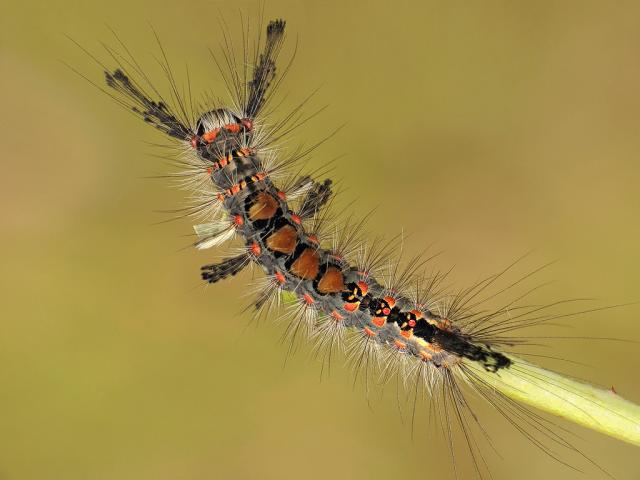
One such caterpillar is the hairy Vapourer, which is around from May to September, after spending the winter as an egg. This is an unusual species as the females are virtually wingless and the males fly during the day (from July to September) but are also often attracted to light at night.
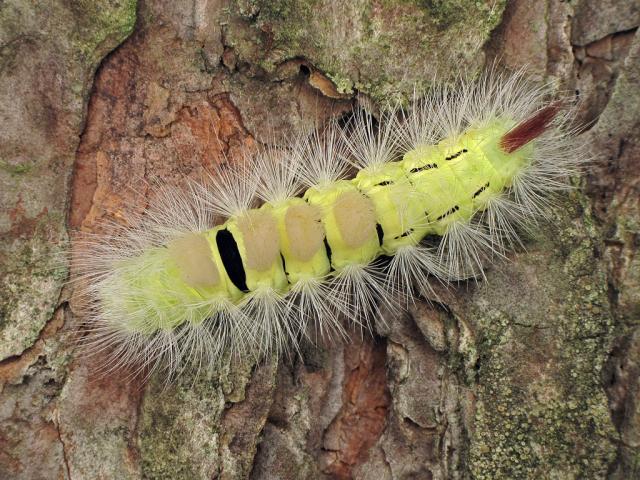
Another hairy caterpillar is the Pale Tussock, which is very distinctive, being greenish-yellow with four tufts of yellow hairs. Caterpillars feed from late June to early October. Overwintering occurs as a pupa and adults fly in May and June and are attracted to light.
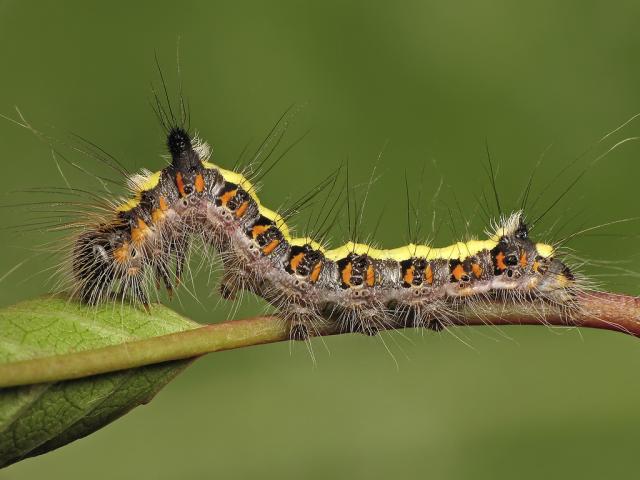
The colourful Grey Dagger caterpillar is red and yellow with a tall hump on its back, close to the head and it can be found between July and October. The moth overwinters as a pupa and the adult flies between June and August.
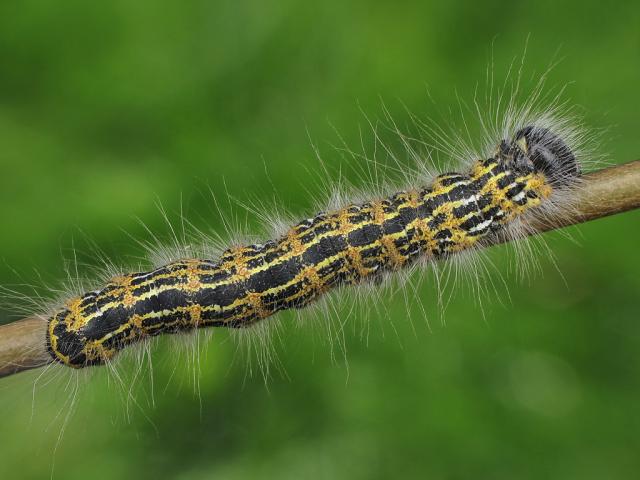
The yellow and black Buff-tip caterpillars live gregariously and feed from July to early October, followed by overwintering as pupae. The adults fly in June and July and when at rest look like a broken birch twig.
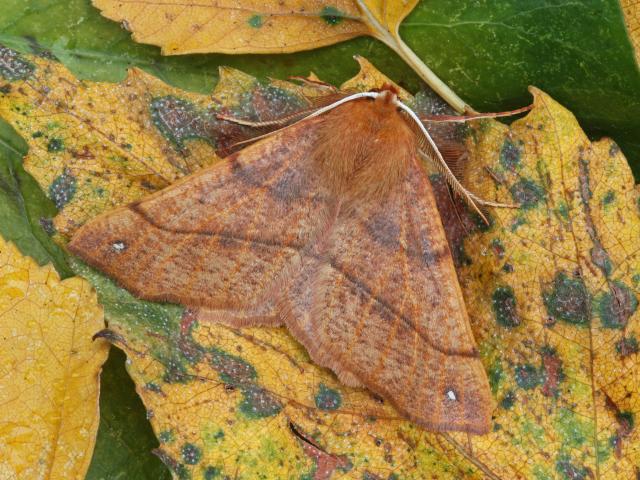
Feathered Thorn caterpillars are around from April to June after overwintering as an egg on the foodplant. Adults are on the wing from September to November and the name comes from the feathery antennae of the male.
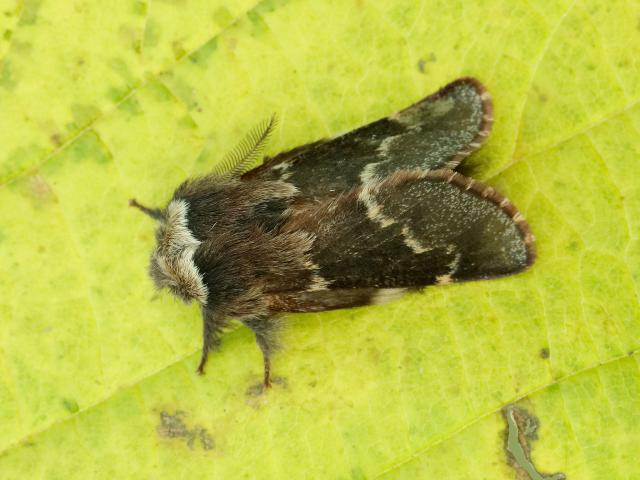
December Moth adults are also on the wing now. The caterpillars feed at night from April to June after overwintering as an egg attached to the bark of a twig or trunk.
Most of these caterpillars will feed on a range of deciduous trees and shrubs but Lesser Swallow Prominent caterpillars feed specifically on Silver Birch and Downy Birch.
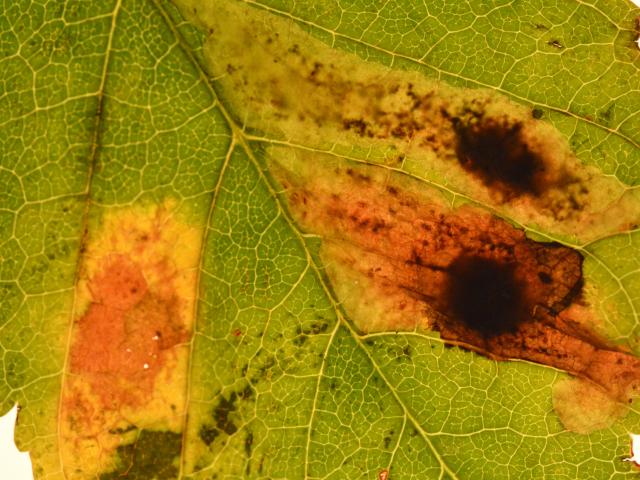
In addition to caterpillars of the larger moths, you might also want to look out for patterns on leaves, which could be mines created by micro-moth caterpillars. A number of tiny leaf-mining micro-moths occur on birch and you can see their mines at different times of the year. Some mines can be seen now – for example, those of Stigmella luteella are found between August and November.
As you happily scuff through the autumn leaves, remember how many creatures are being supported by the trees around you.
Happy Gardening!
The Secret Gardener


